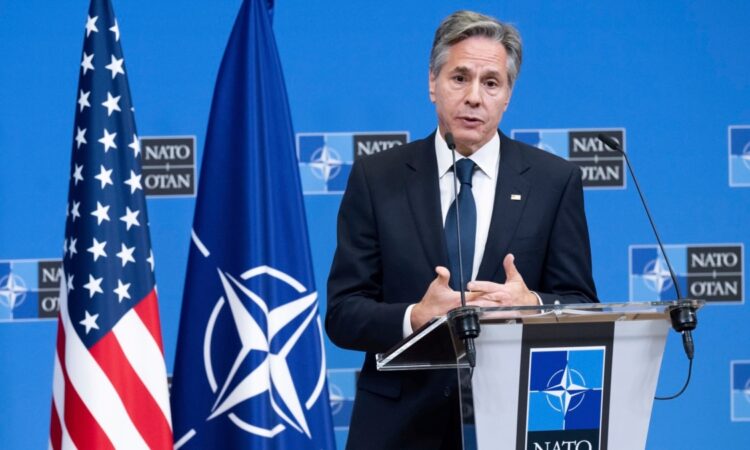
On January 7, Italy’s Foreign Minister Antonio Tajani reanimated his country’s call to create a permanent European Union armed force tasked with peacekeeping and conflict prevention in Europe.
Italy first proposed the creation of an EU “joint permanent military force” in 2016. That sparked criticism and opposition from the United Kingdom and other European countries, who argued that an EU armed force would “undermine” and “duplicate” NATO.
Russian Foreign Ministry spokeswoman Maria Zakharova responded to Tajani’s latest comments in a January 7 Telegram post that included a barrage of hardly comprehensible false and misleading claims, the most egregious of which is debunked in this fact check.
Zakharova implied that NATO and the European Union have the same member states and that the EU countries’ financial contributions to NATO’s common defense budget go to the United States.
“An EU army?… For what, then, must each NATO country (read EU) pay colossal sums to the ‘common till‘ (but, in fact, to Washington), which, as declared, go to ensure their security?”
That is false.
Not all NATO members belong to the EU, and not all EU countries are NATO members. NATO’s common budget is governed by its member countries’ collective decisions and serves the interests of the whole alliance.
To date, NATO has 31 member states, 22 of which are also EU members. Nine NATO member countries — Albania, Canada, Great Britain, Iceland, Montenegro, North Macedonia, Norway, Turkey and the United States — are not EU members.
NATO is financed by direct and indirect contributions from member countries.
Direct costs for NATO’s collective budgets and programs are covered by contributions from alliance members and amount to only 0.3% of NATO members’ total defense spending (approximately $3.6 billion for 2023).
Direct contributions fund NATO’s three principal common budgets — the civilian budget, which funds NATO’s headquarters in Brussels; the military budget, which funds the NATO Command Structure; and the NATO Security Investment Program, which funds military infrastructure and capabilities.
That money doesn’t go to Washington: it is distributed through a a transparent process governed by five different bodies: the North Atlantic Council, the Resource Policy and Planning Board, the Budget Committee and the Investment Committee, “with Allies collectively deciding what is eligible for common funding and how much can be spent each year.”
NATO’s military forces consist of troops and equipment provided by its member states — there are no separate NATO forces — meaning that 99.7% of the funding for the troops from each member country that can be made available for NATO joint military operations comes from the member countries’ own defense budgets.
In 2006, NATO defense ministers declared that each member country should spend at least 2% of its gross domestic product (GDP) on its defense budget “to continue to ensure the Alliance’s military readiness.”
As of July 7, 2023, only 11 NATO member states had met this commitment, with 20 member states still spending less than 2% of GDP for defense. The median military expenditure of NATO member countries is 1.82% of GDP.
The combined size of the GDPs of all NATO countries, except for the United States, is almost equal to the U.S. GDP. Most European NATO member countries spend a smaller share of their GDP on defense, while U.S. military spending accounts for about two-thirds of NATO’s defense spending.
Therefore, Zakharova’s claim that EU countries are funding Washington via NATO is the opposite of the truth: in fact, it is the United States that indirectly provides a disproportionate share of funding for the defense of EU member states.
Two U.S. presidents, Barack Obama and Donald Trump, criticized NATO allies for “free riding” on the U.S. military budget.






